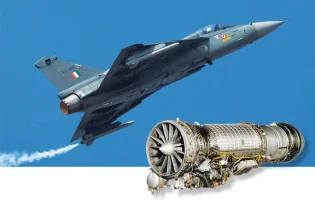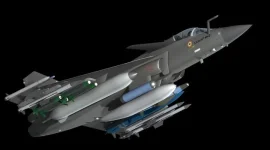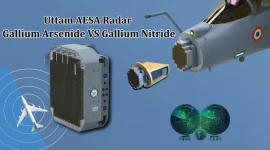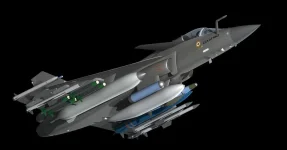- Views: 3K
- Replies: 16
India's indigenous Tejas Mk2 fighter programme is set to achieve a major milestone with the development of new, advanced external fuel tanks that will significantly increase the aircraft's combat range and mission endurance.
The new design will allow the jet to carry nearly double the amount of external fuel compared to its predecessor, the Tejas Mk1, addressing previous limitations and positioning it as a highly capable platform for long-duration air defence operations.
A key aspect of this upgrade involves the development of two new types of external fuel tanks by the Aeronautical Development Agency (ADA) and Hindustan Aeronautics Limited (HAL).
The first is a 1300-litre supersonic drop tank, designed for aerodynamic stability at high speeds, which will be carried on the aircraft's centreline fuselage station.
Additionally, two 1800-litre "pinched waist" drop tanks, engineered to minimise air resistance, can be fitted on the inner wing hardpoints.
These tanks will supplement the Tejas Mk2's substantial 3,300 kg internal fuel capacity, effectively tackling a notable limitation of the earlier Tejas Mk1, which had a smaller internal fuel load of around 2,458 kg.
Powering this enhanced performance is the highly efficient General Electric F-414 turbofan engine. The engine's superior fuel economy, when paired with the massive total fuel capacity of over 7,000 kg (internal and external combined), directly results in a longer operational reach.
This configuration gives the Tejas Mk2 an estimated combat radius of over 1,000 km and a ferry range that could extend up to 3,000 km, depending on flight conditions and payload.
This represents a dramatic improvement in the aircraft's ability to project power and operate far from its home base.
This enhanced endurance fundamentally transforms the Tejas Mk2's role in air defence, particularly for Combat Air Patrol (CAP) missions, which require aircraft to remain airborne over a specific area for extended periods.
With a full load of internal and external fuel, the Tejas Mk2 can conduct sorties lasting approximately 3.5 hours. This is a threefold increase over the Tejas Mk1, which is typically limited to sorties of about 45 minutes.
Importantly, this extended loiter time can be achieved while carrying a formidable weapons load, such as four beyond-visual-range air-to-air missiles (BVRAAMs) like the indigenous Astra series.
Beyond the capability of its fuel tanks, the Tejas Mk2 is equipped for ultra-long-duration flights lasting up to 10 hours through its air-to-air refuelling system.
This feature is complemented by an On-Board Oxygen Generation System (OBOGS), indigenously developed by the Defence Bioengineering and Electromedical Laboratory (DEBEL).
The OBOGS provides an unending supply of breathable air to the pilot, removing the constraints of finite compressed oxygen cylinders and enabling sustained strategic missions over India's extensive land and sea borders.
The Tejas Mk2 is a cornerstone of the Indian Air Force's modernisation efforts and aligns with the national goal of Atmanirbhar Bharat (Self-Reliant India) in defence manufacturing. As a 4.5-generation multirole fighter, it is slated to replace the IAF’s aging fleets of Jaguar, Mirage 2000, and MiG-29 aircraft.
With 11 hardpoints capable of carrying a 6,500 kg payload, an advanced AESA radar, and a suite of indigenous weapons, the Tejas Mk2 is being developed to be a versatile and powerful asset for a wide spectrum of future combat scenarios.





